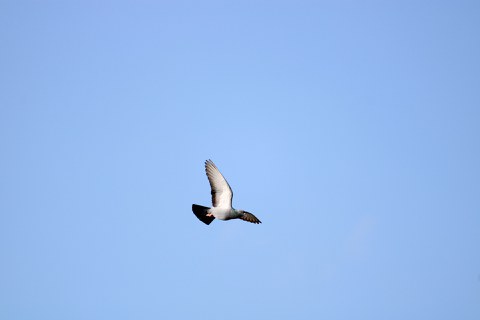Mar 17, 2024
Animals and Money: US Pigeons in WW1

Carrier pigeons played an important role during World War 1 and World War 2. They carried messages across battlefields and saved many soldiers' lives.
The human cost of war is the largest and most devastating price a nation must pay during war. Efficient communication is integral to protect soldiers. During conflict in the US, this was managed by the Signal Corps of the United States Army1. When the US entered World War I in 1917, communication methods included telegraphs, telephones and radio, while continuing older practices of simply using soldiers to run messages across the battlefield2. However, all these means of communication had their flaws that proved to be detrimental on the battlefront. Wires were often damaged by artillery, radio signals could only travel short ranges, wires and radio signals could be sabotaged and having a solider run across a battlefield is just no bulletproof solution either2, 3. When the United States entered the war, however, they noticed that the British and French military were making use of yet another method of communication: the homing pigeon.
Homing pigeons are the domesticated relative of the wild Mediterranean rock dove, Columba livia. They have been bred to be able to fly back to their home, known as a loft, from distant and unfamiliar release points4. They will locate their loft from distances as far as 1,800km and they can fly up to 15h per day at speeds from 50km/h to 145 k/h, covering roughly 1,100 km4, 5, 6.
US military pigeons were trained to recognize mobile lofts as their homing position, instead of an exact geographical location2. It is not clear how the birds are able to locate their loft from such distant and unfamiliar release points. Studies suggest homing pigeons use the position of the sun, along with their internal sense of time, to navigate7. However, until now the true method of these birds’ special ability remains a mystery8. After observing the success of the British and French pigeon services, the US Signal Corps quickly established their own pigeon service in August 19179. The new pigeon service acquired a total of 2,350 pigeons. Those birds were either donated or bought for 2 dollars, which sums up to less than 4,700 dollars9. Mobile lofts were designed and built, and the pigeons were trained in 110 Army posts in the United States9. By October, 6 men, 800 pigeons, 12 mobile lofts, and a large supply of feed were already on a ship headed for France5. At the end of the war, the pigeon service consisted of 9 officers and 324 enlisted men, making it the smallest and cheapest service in the Signal Corps in terms of personnel and supply6, 9, 10. Despite the small size and cost of the US Pigeon Service, these birds provided a priceless service to the war effort. Pigeons were often used to deliver S.O.S. messages from stranded troops, resulting in hundreds of lives being rescued6. During the Meuse-Argonne Offensive of 1918, 550 American soldiers were pushed behind German lines, putting them right in the middle of heavy artillery fire from their own countrymen5. They were cut off completely from American troops. Their only hope was a carrier pigeon, named Cher Ami, who was released with an urgent note tied to his leg. During his 40 km flight Cher Ami was shot in the chest and his leg was torn in half, yet he still delivered the message to his loft in under 25 minutes9. The artillery fire stopped immediately, allowing the 194 surviving soldiers to make their way back to safety9. There are many similar stories of hero pigeons, like Cher Ami, delivering lifesaving messages during war. Over 500 important messages were successfully delivered by pigeons at the battle front, and not one message had gone undelivered according to the US Chief Signal officer9.
The value of pigeons in the US Army goes far beyond the money saved by the Signal Corps. Hundreds of lives were saved directly by the delivered pigeon messages, and countless more were saved indirectly by providing a means of efficient communication between the troops on the battlefield. These pigeons made up for the many shortcomings of available systems of communications, especially on the chaotic front lines, where one message could alter the course of a battle. It is estimated that 300,000 pigeons were used by the Allied forces during the course of World War I, many of which have been decorated for their irreplaceable service11.
*Source nr. 6: Osman, A. H. Pigeons in the Great War: A Complete History of the Carrier-Pigeon Service during the Great War, 1914 to 1918. "The Racing Pigeon" Publishing Co., Ltd., 1929
Online version not available
Layanne Abu-Bader
